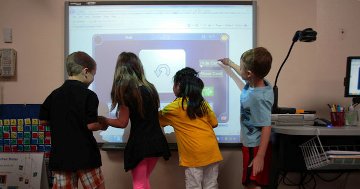Technology has had important impacts on schools and students at all levels. In common, evolution of technology in classrooms is viewed as a positive by educators, according to an article by IT industry association CompTIA. This doesn't mean a number of sides of technology's effect haven't created challenges to learning environment.

In today's technology world, there is increasing aspiration by both administrators and students to use technology in the classroom. It is not uncommon to tour a school campus nowadays and see students on cell phones, tablet PCs and laptop computers surfing Internet, updating social network sites or downloading videos and music. This must not come as a shock though, as our society is clearly moving to a more technical and computerized age. There are benefits that can come from integrating technology in classroom. Unluckily, most veteran teachers are from a much different, less connected generation than students they are working with. It is not strange to see students who are more technologically confidence than their mentors who are four or five times their age.
There are some first challenges that teacher's first face when trying to integrate technology in classroom. First, there are a lot of school districts that do not have resources necessary to carry out certain types of technological instruction. Classroom software and computers licenses are not gladly available to every teacher on every campus. It can be tricky to make technology utilization a campus-wide initiative if there is not sufficient funding for resources or training on using those resources in classroom.
There are always other project based teachings and learning opportunities involving technology but the demands are usually large in the start for the teacher, particularly if this type of instruction is foreign to them. It can sometimes be hard for teachers who have been set in their ways, teaching techniques for years, to rapidly change the way they do things and incorporate techniques that they have never used before. This might make teachers feel uncomfortable and unconfident of their teaching strategy.
How Technology Can Affect Some Teachers-
Teachers might lack confidence while using computers or programs they have no experience with.
Teachers can build on their skill and teaching repertoire with staff technology and development training.
Teachers would gain confidence and effectiveness in instruction with increased computer experience.
Why Technology Benefits Students-
Studies illustrate that computer-trained teachers maintain classrooms that score higher in math than their peers who did not have such training.
When teachers have a positive attitude about using technology, they frequently excite students' interest in technology as well.
Students are able to learn skills that are connected to technology that will add to their utilizable skills in the future.
Virtual Classes-
A major impact of technology is the development of online classes and virtual education. College students take online classes that coincide with their traditional classes and complete degree programs online in some cases. Students in schools from elementary to high school level have access to virtual course programs where they complete their education online at home or in a classroom. Online classes offer convenience, elasticity, less social pressure and development of computer and technology skills.
Instruction-

Classroom instruction has changed too. Teachers are repeatedly evaluated by students on their use of audio-visual tools to enhance learning. In junior high, high school and college, PowerPoint is time and again used for typical daily lectures. Computer simulations, virtual models, digital tools and smart boards are also used for in-class instruction or out-of-class projects. A number of instructors even incorporate mobile devices, social media and the Internet into classroom activities to help students understand how to make use of technology in practical, productive ways.
Student Interest-
The U.S. Department of Education's study "Effects of Technology on Classrooms and Students" notes that student motivation and interest in learning has improved with incorporation of technology. Students are frequently fascinated by computers, the Internet and other technology and take a more active interest in learning when technology is involved. Teachers can also move further than basic lectures and incorporate visual support and tech-centered activities to keep students engaged.
Challenges-
A number of teachers feel pressured to keep up with technology and incorporate it into the classroom or risk losing student interest. As teachers rely on computers and Internet in preparation and teaching, downtime or malfunctions can impede effectiveness and teaching. Cell phones also present the classroom management challenge in middle schools, high schools and colleges. As some teachers embrace mobile devices and incorporate them, others see cell phones as distractions to learning. High schools and many college classes need that students keep phones off and put away in class. This puts pressure on teachers and administration to insist on discipline policies.